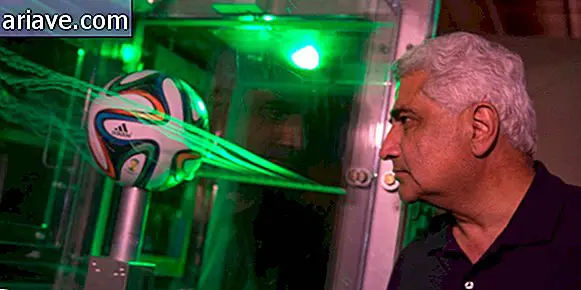Physicist theorizes what would happen if it were possible to travel to the past
Science fiction is filled with amazing stories of characters that surpass the speed of light and travel back in time to the past. However, while many people dream of being able to make such an incursion, according to - most - scientists, going back in time is simply impractical. After all, to begin with, according to Einstein's Theory of Relativity, nothing can exceed the speed of light in a vacuum.
This is because relativity dictates that any moving object that has mass becomes gradually heavier as its velocity increases - which means that an infinite amount of energy would be required for this object to exceed the speed of light. And there can be no energy greater than infinite, right?

On the other hand, for Aunt Ghose of the Live Science portal, although we perceive time as something that can only “move forward” for both Relativity Theory and Particle Physics, time has no orientation.
With this in mind, if we think of antimatter - which, in a nutshell, is the counterpart of matter - it can be interpreted as antiparticles traveling forward in time and as real particles returning to the past. Thus, theoretically speaking, an object capable of moving at speeds faster than light could go back in time.
So, leaving the lack of practicality aside, and if time travel were possible, how would it happen? According to physicist Robert Nemiroff of the Michigan University of Technology, some very strange things would happen as a result of this process. One would be the emergence of a pair of identical copies of the object, and one copy would return and annihilate the other. Crazy? Calm down, it gets even crazier!
Hypothetical travel

To reach this conclusion, Nemiroff made a series of calculations based on a hypothetical situation. He envisioned a spacecraft from a launch pad here on Earth that would travel at a speed five times faster than light until it reached a planet 10 light years away. Then Nemiroff's rocket would turn around and return to our world, landing on a base near its launch.
The calculations revealed that two copies of the spacecraft, one with a positive mass and one with a negative mass - or a ship and an anti-aircraft, if you prefer - would appear during the trip. Also, because the light from the rocket would be traveling slower than the ship itself, five years after it had departed, the spacecraft would be parked and the Terrans would see something very strange: they would see in the sky a departing rocket and a copy of it returning from trip.
And things would get even stranger eight years later. This is because an image of the ship parked at the base would also be visible with the other two, but the copies would be farther apart than before, as if the rocket was returning to the past. Finally, 10 years after the start of the voyage, one of the phantom spacecraft would annihilate the other, and only the small ship at the base would remain.
Huh?

According to Tia, the situation proposed by Nemiroff, although hypothetical, raises a number of questions - also - crazy, for example: how would the trip work? What would the pair of copy ships be made of? Which one would be the real spaceship? And the people flying the rocket, what would they be doing, and what would happen to them? God only knows...
But following the physicist's reasoning, ships and pilots would be made of matter and antimatter, which means they could annihilate if they approached - no? Nemiroff admitted that the conclusions he arrived at with his calculations were melting brains, and that if we analyze the proposed situation coldly, a trip to the past is probably never possible because it would violate the principles of relativity theory.
However, the physicist gave an example in which producing copies would be feasible. Imagine you have a superpowered laser pen and you can point it at the moon. Considering that nothing obscures the light, Nemiroff says that you would need to move your wrist across the moon faster than 4 seconds for the laser point moved faster than light. And if it were possible to record this motion on film, we would see a couple of slightly separated points on the surface of the moon.











